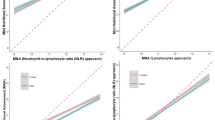Abstract
Objective: The study was to determine whether the Mini Nutritional Assessment (MNA) could be used as a tool to effectively identify malnourished elderly in a non-Caucasian population.Design: The study was a part of a population-based multistage random sample survey.Setting: In-home face-to-face interviews.Participants: Randomly selected 1583 men and 1307 women, 65 years or older, in Taiwan.Measurements: Assessing nutritional risk status of participants with the Mini Nutritional Assessment.Results: The prevalence of malnutrition is 1.7% in elderly men and 2.4% in elderly women, 65 years or older. The proportion at risk of malnutrition is 13.1%.Conclusion: To the best of our knowledge, this is the first study to apply the MNA to estimate the prevalence of malnutrition in the elderly in a nationally representative sample. Results suggest that the MNA can identify malnourished elderly in a non-Caucasian population. However, it appears that the functionality of the instrument can be improved by adapting population-specific anthropometric cutoff standards.
Similar content being viewed by others
References
Guigoz Y., Vellas B.J., Garry P.J. The Mini Nutritional Assessment (MNA): A practical assessment tool for grading the nutritional state of elderly patients. In: Vellas BJ, Guigoz Y, Garry PJ, Albarede JL, eds. Facts and research in gerontology. Serdi Publishing Co., New York, NU. 1994 (Supplement: Nutrition); 15–60.
Guigoz Y., Lauque S., Villas B.J. Identifying the elderly at risk for malnutrition. The Mini Nutritional Assessment Clin. Geriatr. Med., 2002; 18 (4): 737–757.
Delacorte R.R., Moriguti J.C., Motos F.D., Perimer K., Marchini J.S., Ferriolli E. Mini-Nutritional Assessment score and the risk for undernutrition in free-living older persons. J. Nutr. Health Aging, 2004; 8(6): 531–534.
Guerin O., Soto M.E., Brocker P., et al. Nutritional status assessment during Alzheimer’s disease: results after one year (The REAL French Study Group). J. Nutr. Health Aging, 2005; 9(2): 81–84.
Bleda M.J., Bolibar I., Pares R., Salva A. Reliability of the Mini Nutritional Assessment (MNA) in institutionalized elderly people. J. Nutr. Health Aging, 2002; 6(2): 134–137.
Soini H., Routasalo P., Lagstrom H. Characteristics of the Mini-Nutritional Assessment in elderly home-care patients. Eur. J. Clin. Nutr., 2004; 58(1): 64–70.
Vellas B., Guigoz Y., Garry P.J., et al. The mini nutritional assessment (MNA) and its use in grading the nutritional state of the elderly patients. Nutrition, 1999; 15: 116–122.
Guigoz Y., Vellas B., Garry P.J. Assessing the nutritional status of the elderly: The mini nutritional assessment as part of the geriatric evaluation. Nutr. Rev., 1996; 54 (suppl): S59-S65.
Kuzuya M., Kanda S., Koike T., Suzuki Y., Satake S., Iguchi A. Evaluation of Mini-Nutritional Assessment for Japanese frail elderly. Nutrition, 2005; 21: 498–503.
Barone L., Milosavljevic M., Gazibarich B. Assessing the older person: is the MNA a more appropriate nutritional assessment tool than the SGA? J. Nutr. Health Aging, 2003;7(1): 13–17.
1989 Survey of health and living status of the elderly in Taiwan: Questionnaire and survey design. Comparative study of the elderly in four Asian countries. Research report No. 1/December 1989.
Chang M.C., Hermalin A.I. 1996 Survey of health and living status of the middle aged and elderly in Taiwan. (A) Survey of those over 50–66 years of age. Elderly in Asia research report No. 98–49, April 1998.
Chang M.C., Hermalin A.I. 1996 Survey of health and living status of the middle aged and elderly in Taiwan. (B) Survey of those over 67 years of age. Elderly in Asia research report No. 98–50, April 1998.
Assessment of the hospitalized patient. In: Nutritional assessment Lee RD & Nieman DC. Ed. WCB Brown & Benchmark Publications. Madison, Wisconsin. 1993: 165–191.
Kuczmarski M.F., Kuczmarski R.J., Najjar M. Effects of age on validity of self-reported height, weight, and body mass index: Findings from the third National Health and Nutrition Examination Survey, 1988–1994. J. Am. Diet. Assoc., 2001; 101: 28–34.
Margetts B.M., Thompson R.L., Elia M., Jackson A.A. Prevalence of risk of undernutrition is associated with poor health status in older people in the UK. Eur. J. Clin. Nutr., 2003; 57(1): 69–74.
WHO expert consultation. Appropriate body-mass index for Asian populations and its implications for policy and intervention strategies. The Lancet 2004; 363: 157–163.
Deurenberg P., Deurenberg-Yap M., Guricci S. Asians are different from Caucasians and from each other in their body mass index/body fat per cent relationship. Obes. Rev., 2002; 3: 141–146.
Bonnefoy M., Jauffret M., Kostka T., Jusot J.F. Usefulness of calf circumference measurement in assessing the nutritional state of hospitalized elderly people. Geront., 2002; 48: 162–169.
Kyle U.G., Genton L., Pichard C. Hospital length of stay and nutritional status. Curr. Opin. Clin. Nutr. Metab. Care, 2005; 8(4): 397–402.
Aliyu M.H., Adediran A.S., Obisesan T.O. Predictors of hospital admissions in the elderly: analysis of data from the Longitudinal Study on Aging. J. Nat. Med. Assoc., 2003; 95(12): 1158–1167.
Donini L.M., Savina D., Rosan A., et al. MNA predictive value in the follow-up of geriatric patients. J. Nutr. Health Aging, 2003; 7(5): 282–293.
Woo J., Chumlea W. C., Sun S. S. et al. Development of the Chinese Nutrition Screen (CNS) for use in Institutional Settings. J. Nutr. Health Aging, 2005; 9: 203–210.
Cairella G., Baglio G., Censi L. et al. Mini Nutritional Assessment (MNA) and nutritional risk in the elderly. A proposal of nutritional surveillance system for the Department of Public Health. Ann. Ig., 2005; 17(10): 35–46.
Author information
Authors and Affiliations
Corresponding author
Additional information
Former Taiwan Provincial Institute of Family Planning.
Rights and permissions
About this article
Cite this article
Tsai, A.C., Ho, C.S. & Chang, M.C. Assessing the prevalence of malnutrition with the Mini Nutritional Assessment (MNA) in a nationally representative sample of elderly Taiwanese. J Nutr Health Aging 12, 239–243 (2008). https://doi.org/10.1007/BF02982628
Received:
Accepted:
Issue Date:
DOI: https://doi.org/10.1007/BF02982628




